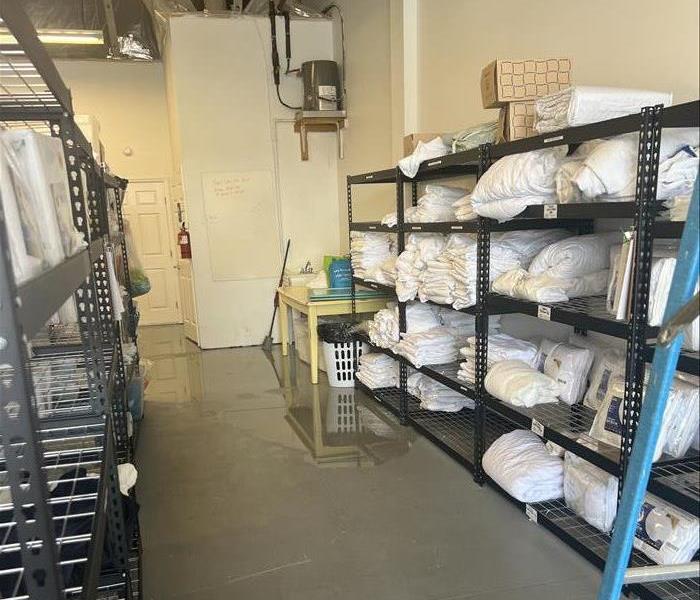What to Do When Flooding Strikes Your Home or Business: A SERVPRO® Guide
1/6/2024 (Permalink)
Flooding can be a sudden and devastating event that leaves your home or business in disarray. Knowing what to do in the immediate aftermath can make a significant difference in minimizing damage and ensuring your safety. In this SERVPRO blog post, we'll provide you with a step-by-step guide on what to do when flooding hits your property.
1. Ensure Safety First
Before taking any action, prioritize safety for yourself, your family, or your employees. If flooding poses immediate danger, evacuate the premises and seek higher ground. Never underestimate the power of moving water.
2. Turn Off Utilities
If it is safe to do so, turn off the electricity, gas, and water supply to your property. This helps prevent electrical hazards and further damage caused by gas leaks or water pressure issues.
3. Document the Damage
Take photographs or videos of the flooded areas and any damaged belongings or structures. This documentation will be valuable when filing insurance claims or seeking assistance from professionals like SERVPRO.
4. Contact Your Insurance Company
Notify your insurance company about the flooding incident as soon as possible. Familiarize yourself with your policy coverage and ask questions to understand your responsibilities during the claims process.
5. Avoid Floodwater Contact
Floodwater may contain contaminants, bacteria, and dangerous debris. Avoid direct contact with floodwater as it can pose health risks. Wear protective clothing if necessary and ensure any cuts or open wounds are covered.
6. Remove Standing Water
If safe and possible, begin removing standing water from your property. Use buckets, pumps, or wet/dry vacuums to extract water. The sooner you begin this process, the better chance you have of minimizing damage.
7. Salvage Important Belongings
While removing water, prioritize salvaging important documents, heirlooms, and valuables. Move them to a safe, dry area to prevent further damage.
8. Ventilate and Dry
Promote air circulation by opening doors and windows if it's safe to do so. Use fans and dehumidifiers to aid in the drying process. Reducing humidity can prevent mold growth.
9. Call SERVPRO for Professional Help
Flooding can cause extensive damage that requires specialized equipment and expertise for proper cleanup and restoration. Contact SERVPRO for professional water damage restoration services. Our certified technicians will assess the situation, extract water, dry affected areas, and ensure thorough cleanup and disinfection.
10. Prevent Further Damage
Take measures to prevent further damage, such as tarping or boarding up damaged windows or roofs. This helps protect your property until repairs can be made.
11. Follow Local Authorities' Instructions
Stay informed about local emergency instructions and adhere to their guidance regarding re-entry, cleanup, and any additional safety measures.
12. Maintain Records
Keep detailed records of all expenses related to flood damage, including repair costs, temporary accommodations, and meals if you were displaced. These records will be essential for insurance claims.
In times of flooding, a quick and coordinated response is crucial. By following these steps and enlisting the help of professionals like SERVPRO, you can navigate the challenging process of recovery and restoration. Our experienced team is here to assist you, ensuring your property is brought back to its pre-flood condition safely and efficiently.
For more in formation on water damage from flooding Click Here






 24/7 Emergency Service
24/7 Emergency Service
